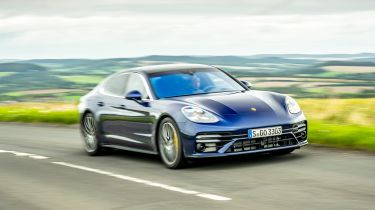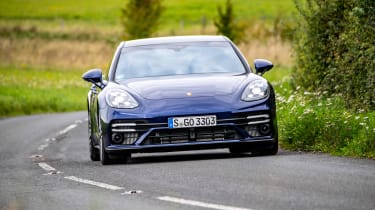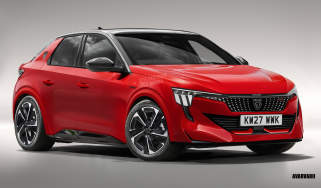Porsche Panamera review - Engines, performance and drive
The Panamera range now spans the entry-level V6 cars, to the range-topping Turbo S and E-Hybrid performance versions

Porsche is known for its sports cars, and even with its more refined models like the Panamera, it’ll outperform many rival brands.
The latest car has an all-new chassis, so the Panamera is more practical, but also more agile. There’s more aluminium used in the car's construction, so for its size it’s relatively light at 1,900kg, although it's worth noting the hybrid models, with the extra battery weight, range from around 2,200kg to 2,400kg.
The Panamera sits on the VW Group’s MSB platform for front-engined cars, which Porsche has been responsible for developing. The German manufacturer says this gives it “great versatility” as it means two different wheelbases (standard and long) can be produced, while “further body derivatives are also relatively easy to realise." One result is that there is a Panamera Sports Turismo estate on offer.
A facelift in 2020 saw the Turbo edition replaced with the Turbo S. It has a retuned version of the car’s familiar 4.0-litre twin-turbocharged V8 engine and produces 621bhp and 820Nm of torque - gains of 79bhp and 50Nm over the outgoing Turbo. It can crack 0-62mph in just 3.1 seconds, and reach a top speed of 196mph. The Turbo S gets a unique front-end look, with twin light bars and more body-coloured elements in the front bumper, to make the vehicle look wider.
More reviews
Car group tests
- Audi RS 7 Sportback vs Porsche Panamera: 2023 twin test review
- Porsche Taycan vs Porsche Panamera: 2022 twin-test review
- Audi RS 6 Avant vs Porsche Panamera Sport Turismo
In-depth reviews
Road tests
- New Porsche Panamera GTS 2024 review: a serious BMW M5 rival
- New Porsche Panamera 2024 review: fast family car is better than ever
- New Porsche Panamera 4S E-Hybrid 2020 review
Used car tests
Porsche also introduced the 4S E-Hybrid and Turbo S E-Hybrid. The former combines a 134bhp electric motor with a 2.9-litre twin-turbocharged V6 petrol engine producing 435bhp, delivering a total output of 552bhp and 750Nm. The more powerful Turbo S E-Hybrid uses a 4.0-litre V8 unit in tandem with the same electric motor to give a 690bhp output.
The new E-Hybrid versions feature a bigger battery than previous Panamera hybrids (up from 14.1kWh to 17.9kWh), allowing up to 31 miles of pure-electric drive.
GTS versions now include a re-tuned twin-turbo V8 unit, producing 473bhp and 620Nm (a 20bhp increase). Porsche claims the alterations have made the engine feel more like a normally aspirated motor, being keener to rev. The regular Panamera and Panamera 4 continue to use the existing 2.9-litre V6, with an unchanged power figure of 326bhp.
The Panamera's steering has just the right level of weight and feedback, while the grip and traction would embarrass some sports cars. Plus, the Panamera has real poise and balance considering its two-tonne weight. Taut body control aside, the Porsche switches to a luxury limo when you move from Sport Plus to Comfort mode.
Engines, 0-60 acceleration and top speed
Pick any Panamera version and you won't be lacking in raw performance. The 'standard' 326bhp Panamera and Panamera 4 are able to reach 0-62mph in 5.6s and 5.3s, respectively, while the 434bhp 4S variant cuts this to a seriously quick 4.3s.
The 4 E-Hybrid manages the same dash in 4.4s and the 4S E-Hybrid in 3.7s, with the GTS recording a time of 3.9s and a 186mph maximum.
At the top of the range, the Panamera Turbo S E-Hybrid and Turbo S models would keep most supercars honest with 0-62mph times of 3.2s and 3.1s, respectively. Top speed for both cars is 196mph.









